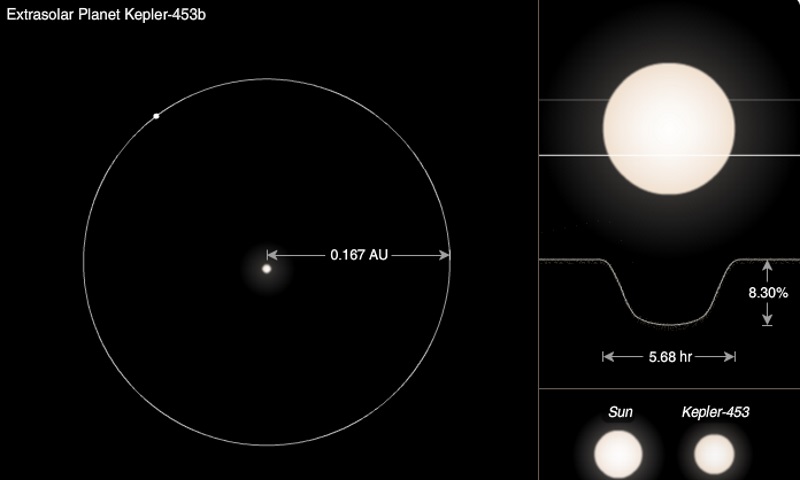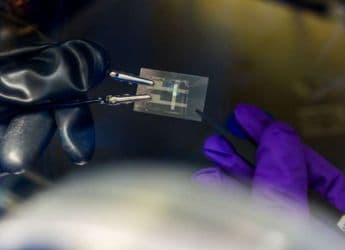- Home
- Science
- Science News
- Nasa's Kepler Space Observatory Discovers New Planet Orbiting 2 Stars
Nasa's Kepler Space Observatory Discovers New Planet Orbiting 2 Stars

The planet, known as Kepler-453b, is the 10th such "circumbinary" planet discovered by the Kepler mission.
The planet's radius is 6.2 times that of Earth, or about 60 percent larger than Neptune, the astronomers calculated.
Its size indicates it is a gas giant, rather than a rocky planet, and thus unable to have life despite being in the habitable zone, they noted.
"But it could have moons that are rocky, which means you could have life on the moons in this system," said Stephen Kane, assistant professor of physics and astronomy at San Francisco State University and member of the team that made the discovery.
Any inhabitants of the system would see two suns in their sky much like the view from the planet Tatooine in the movie "Star Wars" orbiting each other every 27 days.
The larger star is about 94 percent the size of our sun, the smaller star only 20 percent the size of our sun and much cooler, emitting less than one percent of the larger star's energy.
Kepler-453b takes 240 days to orbit its host stars.
"We did not know circumbinary systems could exist until Kepler came along, and since then we have been finding them in larger numbers," Kane said.
The first two-star system was discovered by the Kepler mission in 2011.
The discovery of the new star appeared in the Astrophysical Journal.
Get your daily dose of tech news, reviews, and insights, in under 80 characters on Gadgets 360 Turbo. Connect with fellow tech lovers on our Forum. Follow us on X, Facebook, WhatsApp, Threads and Google News for instant updates. Catch all the action on our YouTube channel.
- Samsung Galaxy Unpacked 2025
- ChatGPT
- Redmi Note 14 Pro+
- iPhone 16
- Apple Vision Pro
- Oneplus 12
- OnePlus Nord CE 3 Lite 5G
- iPhone 13
- Xiaomi 14 Pro
- Oppo Find N3
- Tecno Spark Go (2023)
- Realme V30
- Best Phones Under 25000
- Samsung Galaxy S24 Series
- Cryptocurrency
- iQoo 12
- Samsung Galaxy S24 Ultra
- Giottus
- Samsung Galaxy Z Flip 5
- Apple 'Scary Fast'
- Housefull 5
- GoPro Hero 12 Black Review
- Invincible Season 2
- JioGlass
- HD Ready TV
- Laptop Under 50000
- Smartwatch Under 10000
- Latest Mobile Phones
- Compare Phones
- Poco F8 Ultra
- Poco F8 Pro
- Huawei Mate 80 RS Master Edition
- Huawei Mate 80 Pro Max
- Huawei Mate 80 Pro
- Huawei Mate 80
- Huawei Mate X7
- Honor 500
- Asus ProArt P16
- MacBook Pro 14-inch (M5, 2025)
- Poco Pad M1
- Poco Pad X1
- Honor Watch X5
- Huawei Watch Ultimate 2
- Acerpure Nitro Z Series 100-inch QLED TV
- Samsung 43 Inch LED Ultra HD (4K) Smart TV (UA43UE81AFULXL)
- Asus ROG Ally
- Nintendo Switch Lite
- Haier 1.6 Ton 5 Star Inverter Split AC (HSU19G-MZAID5BN-INV)
- Haier 1.6 Ton 5 Star Inverter Split AC (HSU19G-MZAIM5BN-INV)












